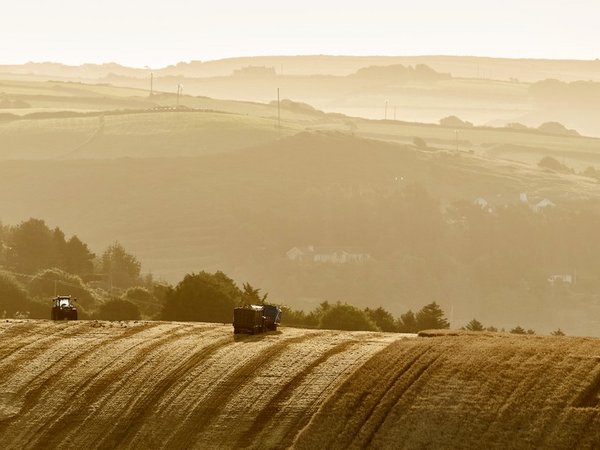 Read this article in French
Read this article in French- Share this article
- Subscribe to our newsletter
Using the soil’s potential for climate mitigation
Using the soil’s capacity to bind large quantities of carbon could reduce the increase of the greenhouse gas carbon dioxide in the atmosphere by a third. At the same time, agricultural yields in many regions would also improve significantly.
An international team of researchers is now advocating effective use of this potential, as the University of Bonn reported on its website in November 2020. In a recent publication they present a strategy to achieve these goals. The study is published in the journal Nature Communications.
Soils are already a gigantic carbon store
The climate summit in Paris in 2015 was also the birth of the so-called "4 per 1,000" initiative. Its name stands for a link that has not received enough attention in climate research and politics for a long time: Every year, the amount of carbon in the atmosphere increases by more than four billion tons due to the man-made greenhouse gas CO2.
If these four billion tons were instead sequestered in the earth's soils (thus completely halting the greenhouse effect), the amount of carbon contained in the soil would grow by only 0.4 per cent annually (i.e. four out of 1,000). In other words: Soils are already a gigantic carbon store. So why not simply dump the excess CO2 in it as an additional, minuscule amount?
Experts are indeed confident today that this strategy could significantly slow down climate change. "0.4 percent additional carbon input is somewhat too optimistic," explains Prof. Wulf Amelung, who heads the Division of Soil Science at the University of Bonn. "However, a third of this is probably achievable." Nevertheless, little has changed since 2015.
Simple measures to increase the amount of carbon in the soil
There are a number of simple measures to increase the amount of carbon in the soil, such as mulching (i.e. covering the soil with crop residues) or adding plant-based coal. The most important method, however, is to increase plant growth (and thus crop yields): by liming acidic soils, by fertilizing as needed, by using smart irrigation. The more grows on the soil, the better it is rooted, and roots with their widely branching networks of organic material store lots of carbon, the researchers point out. Moreover, the organic matter contains essential nutrients for plant growth and thus promotes crop yield. Therefore, the strategy addresses two important goals: climate protection and food security.
However, because quality and characteristics of soils globally are very different, and the available management technologies are dissimilar, locally adapted measures are required. In addition, many carbon sequestration measures are particularly effective when soils are partially degraded by long-term overuse and have lost a lot of carbon. From a cost-benefit perspective, it makes the most sense to start on such areas, not least because the yield increases are likely to be greatest there, according to the experts.
Unfortunately, however, knowledge about the condition of soil is very patchy. The researchers therefore recommend the establishment of databases that record the condition of land around the globe on a very small scale, as well as an equally small-scale modelling of possible yield gains and the necessary use of fertilizers. It must furthermore be ensured that there is no mere redistribution of carbon inputs: for example, organic material is moved from one farm to another at great expense and is now missing at its place of origin.
(University of Bonn/ile)
More information at University of Bonn website





Add a comment
Be the First to Comment